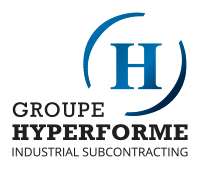In the industrial sector, as in many other lines of business, business development is of the utmost importance for the growth and profitability of the company. Building up a client base, knowing how to make sure it grows, and renewing it is essential if you hope to grow and find a place in your market. Prospecting has always played a key role on the road to growth. Unfortunately for manufacturing companies, which are used to dealing with the real, concrete world, implementing an effective, up-to-date customer acquisition strategy often proves complicated, either because they don’t measure its importance or because they lack the strategic knowledge and technical means to achieve it. To fill the gaps in this context, we propose 8 effective prospecting methods suited to the specifics of the manufacturing world.
The traditional methods
Prospecting is as old as commerce and follows similar rules, regardless of the sector. A successful business development strategy in the manufacturing world should therefore logically include conventional techniques such as:
1. Business networking
This is one of the most basic forms of commercial prospecting. It’s also one of the most effective. Based on the address book, it involves continuously developing the company’s client portfolio by participating in frequent meetings that put professionals in the same sector, buyers and sellers of goods or services, into contact with one another in the context of direct exchanges. This method is inexpensive and helps the company effectively develop its brand image.
2. Visibility at trade shows and conferences
Similar enough to the previous method, attending professional events offers the company the opportunity to rapidly increase their reputation and affirm their expertise in a given field in the eyes of the participants, whose interest has already been clearly established. For optimal effectiveness, these appearances should be followed by prospecting activities targeted to the participants who have shown some interest.
3. Teleprospecting
Ideal for making first contact, prospecting over the phone (or teleprospecting) helps you easily land a meeting, then easily maintain the business relationship between the company and its B2B partners thanks to adequate qualification of the different contacts.
4. Business intelligence
Keeping up to date on the opportunities offered by the market in real time, as well as the behaviour and expectations of potential customers, helps the sales force more effectively shape their prospecting activities. Today, business intelligence can take multiple forms.
Business development methods 2.0
The explosive growth of information and communication technologies has logically impacted traditional prospecting methods, opening up new horizons for companies thanks to new tools and techniques.
5. Online visibility
Now practically essential regardless of size or line of business, a company’s online presence is an excellent passive prospecting tool. A real showcase that’s accessible at any time, the website allows prospects to make first contact with the company and its activities. Specialized networks like LinkedIn and the most popular networks such as Facebook and Instagram also offer – to a certain extent – exceptional opportunities for remote business development. Their operating principles as well as the numerous tools they offer help you approach prospecting and customer acquisition in a dynamic, adaptive, and sustainable way.
6. Email marketing
Version 2.0 of sending mail, email marketing and the techniques it involves (“automation marketing,” etc.) is still considered one of the most profitable and effective communication and business development methods there is, provided that you know how to optimize its different parameters.
7. Search engine optimization (SEO)
Today, the internet is the new “marketplace,” and since websites all offer different things, search engine optimization, or SEO, is essential, since it lets you position yourself above the fray and stand out from the crowd in the eyes of your potential customers by offering you a prime spot on the keywords and search terms related to your industry.
8. Search engine marketing (SEM)
Web advertising, often presented in the form of a banner, can take several forms and thereby adapt itself to your target in a strategic way by using – once again – the keywords related to the queries associated with your industry. This tactic can prove very profitable over the short and long term, since, in addition to reaching a very large population base, it’s possible to target any type of customer thanks to detailed statistics on them.
The possible prospecting methods for developing your client portfolio are multiple and varied. However, optimizing their impact necessarily involves properly structuring the teams and methods put in place.
If you have the desire to grow and are open to change but don’t have the necessary time or resources to advance, Groupe Hyperforme frees you from the pressure of business development in the manufacturing sector by giving you access to a solid business network, proven sales and prospecting strategies, and humane, personalized support within a growing team.














